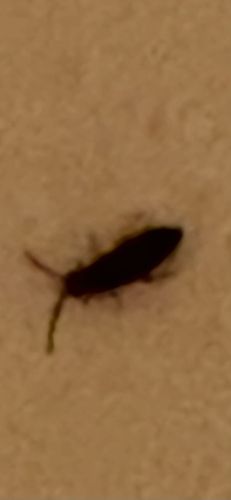Springtail
Scientific Name: Collembola (general classification as there are many species, e.g., Folsomia candida, Sinella curviseta)
Order & Family: Order: Collembola (not classified as insects but as hexapods closely related to insects). There are many families within Collembola, such as Entomobryidae, Isotomidae, Sminthuridae.
Size: Typically 0.2 mm to 10 mm in length, most commonly 1-3 mm.

Natural Habitat
Moist environments such as soil, leaf litter, decaying wood, compost piles, under bark, in damp basements, bathrooms, and potted plants.
Diet & Feeding
Mainly decaying organic matter, fungi, algae, bacteria, and sometimes roots of young plants.
Behavior Patterns
Springtails are known for their ability to jump using a spring-like appendage called a furcula, located on their abdomen. They are detritivores, playing a crucial role in decomposition. They thrive in moist environments and are often found in large numbers when conditions are right. They reproduce rapidly.
Risks & Benefits
Generally harmless to humans and pets. They do not bite or transmit diseases. Can be a nuisance indoors if present in large numbers, indicating high humidity or moisture problems. In gardens and agriculture, they are beneficial decomposers, contributing to soil health. Occasionally, some species might nibble on delicate seedlings, but significant crop damage is rare. Their presence can be an indicator of good soil health and organic matter.
Identified on: 8/22/2025